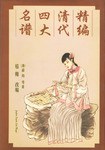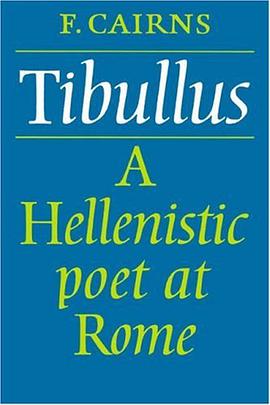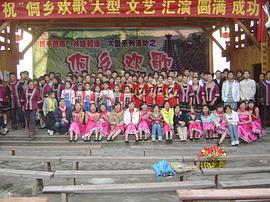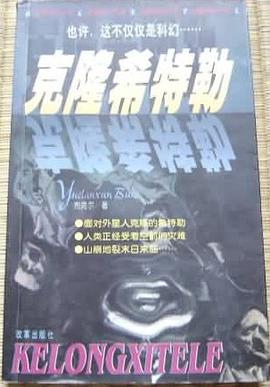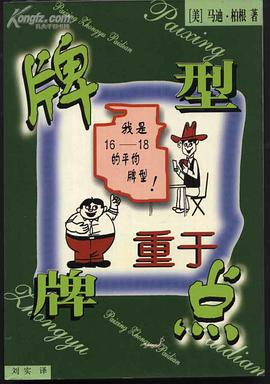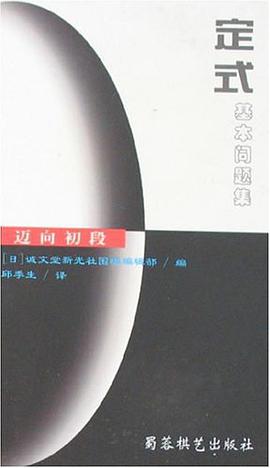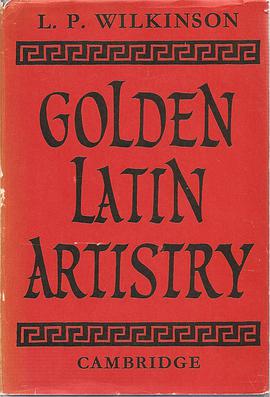
具体描述
作者简介
目录信息
Introduction
Part I: Sounds
1. Pronunciation
2. Verbal Music
2.I. The controversy
2.II. Ancient ideas about euphony and cacophony
2.II(a) Letters, syllables, words
2.II(b) Collocation of words
2.II(c) Alliteration
2.II(d) Assonance
2.II(e) Rhyme
2.III. The reality of verbal music
3. Expressiveness
3.I. Expressive words
3.II. Expressiveness in literature
3.III. Varieties of expressive technique
3.III(a) Subjective mouth-gesture
3.III(b) Objective imitation of sound
3.III(c) Objective imitation of rhythm
3.III(d) Objective mouth-gesture
3.III(e) Association
3.III(f) Appropriate euphony and cacophony
3.III(g) Appropriate configuration of words
3.III(h) Metaphor from sound-values
3.III(i) Metaphor from word order
3.III(j) Expressive repetition
3.III(k) Metaphor from rhythm
3.III(l) Metaphor from verse-technique
3.III(m) Compound effects
3.IV. Expressiveness in Virgil, Georgics, I, 43-392
3.V. Expressiveness in some other poets
Part II: Rhythms
4. Verse Rhythm
4.I. Accent, quantity, ictus
4.II. Caesura
4.III. Popular verse
4.IV. Lyric verse
4.IV(a) Catullus
4.IV(b) Horace
4.IV(b)(i) General
4.IV(b)(ii) Sapphics
4.IV(b)(iii) Alcaics
4.IV(b)(iv) Asclepiads
4.V. Dactylic verse
4.V(a) Restrictive rules
4.V(b) The Pulse-Accent theory
4.V(b)(i) General statement
4.V(b)(ii) Illustrations
4.V(b)(ii)(α) Hexameter caesuras
4.V(b)(ii)(β) Hexameter endings
4.V(b)(ii)(γ) Pentameter endings
4.V(b)(iii) Further evidence
4.V(b)(iv) Expressive effects
4.V(b)(v) Summing up
4.V(c) Hexameter rhythm
4.V(d) Elegiac rhythm
5. Prose rhythm
5.I. General considerations
5.I(a) The legacy of Aristotle
5.I(b) The comparative method
5.I(c) Feet, ictus and verse-sections
5.I(d) Clausulae
5.I(e) Beginnings and middles
5.II. Development of prose rhythm at Rome
5.II(a) Early prose
5.II(b) Cicero and the rhetorical tradition
5.II(c) Sallust and the historical tradition
5.III. Conclusion
Part III: Structure
6. Periodic prose
6.I. Nature of the period
6.I(a) The legacy of Aristotle
6.I(b) Views of Demetrius and 'Longinus'
6.I(c) Views of Cicero and Quintilian
6.I(d) Features of the period
6.II. Artistic structure in Latin prose
6.II(a) Oratory
6.II(b) History
7. Architectonics of verse
7.I. General
7.II. Hexameters
7.III. Elegiacs
7.IV. Lyrics: Horace
7.IV(a) Meinke's law
7.IV(b) Periodic structure
8. Word-patterns
8.I. Hyperbaton in general
8.II. Hexameters: Virgil
8.III. Lyrics: Horace
Appendix I: Rival Theories to the Pulse-Accent Theory of Latin Dactylic Verse
A. Various explanations
A(1) Hexameter caesuras
A(2) Verse-endings
A(2)(a) Hexameters
A(2)(b) Pentameters
B. Answers to some criticisms of the Pulse-Accent theory
Appendix II: Some Modern Theories of Latin Prose Rhythm
A. Clausulae
B. Beginnings and middles
References in the text
Index of modern works cited
Index of passages cited
· · · · · · (收起)
Part I: Sounds
1. Pronunciation
2. Verbal Music
2.I. The controversy
2.II. Ancient ideas about euphony and cacophony
2.II(a) Letters, syllables, words
2.II(b) Collocation of words
2.II(c) Alliteration
2.II(d) Assonance
2.II(e) Rhyme
2.III. The reality of verbal music
3. Expressiveness
3.I. Expressive words
3.II. Expressiveness in literature
3.III. Varieties of expressive technique
3.III(a) Subjective mouth-gesture
3.III(b) Objective imitation of sound
3.III(c) Objective imitation of rhythm
3.III(d) Objective mouth-gesture
3.III(e) Association
3.III(f) Appropriate euphony and cacophony
3.III(g) Appropriate configuration of words
3.III(h) Metaphor from sound-values
3.III(i) Metaphor from word order
3.III(j) Expressive repetition
3.III(k) Metaphor from rhythm
3.III(l) Metaphor from verse-technique
3.III(m) Compound effects
3.IV. Expressiveness in Virgil, Georgics, I, 43-392
3.V. Expressiveness in some other poets
Part II: Rhythms
4. Verse Rhythm
4.I. Accent, quantity, ictus
4.II. Caesura
4.III. Popular verse
4.IV. Lyric verse
4.IV(a) Catullus
4.IV(b) Horace
4.IV(b)(i) General
4.IV(b)(ii) Sapphics
4.IV(b)(iii) Alcaics
4.IV(b)(iv) Asclepiads
4.V. Dactylic verse
4.V(a) Restrictive rules
4.V(b) The Pulse-Accent theory
4.V(b)(i) General statement
4.V(b)(ii) Illustrations
4.V(b)(ii)(α) Hexameter caesuras
4.V(b)(ii)(β) Hexameter endings
4.V(b)(ii)(γ) Pentameter endings
4.V(b)(iii) Further evidence
4.V(b)(iv) Expressive effects
4.V(b)(v) Summing up
4.V(c) Hexameter rhythm
4.V(d) Elegiac rhythm
5. Prose rhythm
5.I. General considerations
5.I(a) The legacy of Aristotle
5.I(b) The comparative method
5.I(c) Feet, ictus and verse-sections
5.I(d) Clausulae
5.I(e) Beginnings and middles
5.II. Development of prose rhythm at Rome
5.II(a) Early prose
5.II(b) Cicero and the rhetorical tradition
5.II(c) Sallust and the historical tradition
5.III. Conclusion
Part III: Structure
6. Periodic prose
6.I. Nature of the period
6.I(a) The legacy of Aristotle
6.I(b) Views of Demetrius and 'Longinus'
6.I(c) Views of Cicero and Quintilian
6.I(d) Features of the period
6.II. Artistic structure in Latin prose
6.II(a) Oratory
6.II(b) History
7. Architectonics of verse
7.I. General
7.II. Hexameters
7.III. Elegiacs
7.IV. Lyrics: Horace
7.IV(a) Meinke's law
7.IV(b) Periodic structure
8. Word-patterns
8.I. Hyperbaton in general
8.II. Hexameters: Virgil
8.III. Lyrics: Horace
Appendix I: Rival Theories to the Pulse-Accent Theory of Latin Dactylic Verse
A. Various explanations
A(1) Hexameter caesuras
A(2) Verse-endings
A(2)(a) Hexameters
A(2)(b) Pentameters
B. Answers to some criticisms of the Pulse-Accent theory
Appendix II: Some Modern Theories of Latin Prose Rhythm
A. Clausulae
B. Beginnings and middles
References in the text
Index of modern works cited
Index of passages cited
· · · · · · (收起)
读后感
评分
评分
评分
评分
评分
用户评价
评分
et incipientes Latine scribere hoc libello artis multum colere et soliti possunt.
评分et incipientes Latine scribere hoc libello artis multum colere et soliti possunt.
评分et incipientes Latine scribere hoc libello artis multum colere et soliti possunt.
评分et incipientes Latine scribere hoc libello artis multum colere et soliti possunt.
评分et incipientes Latine scribere hoc libello artis multum colere et soliti possunt.
相关图书
本站所有内容均为互联网搜索引擎提供的公开搜索信息,本站不存储任何数据与内容,任何内容与数据均与本站无关,如有需要请联系相关搜索引擎包括但不限于百度,google,bing,sogou 等
© 2025 qciss.net All Rights Reserved. 小哈图书下载中心 版权所有


